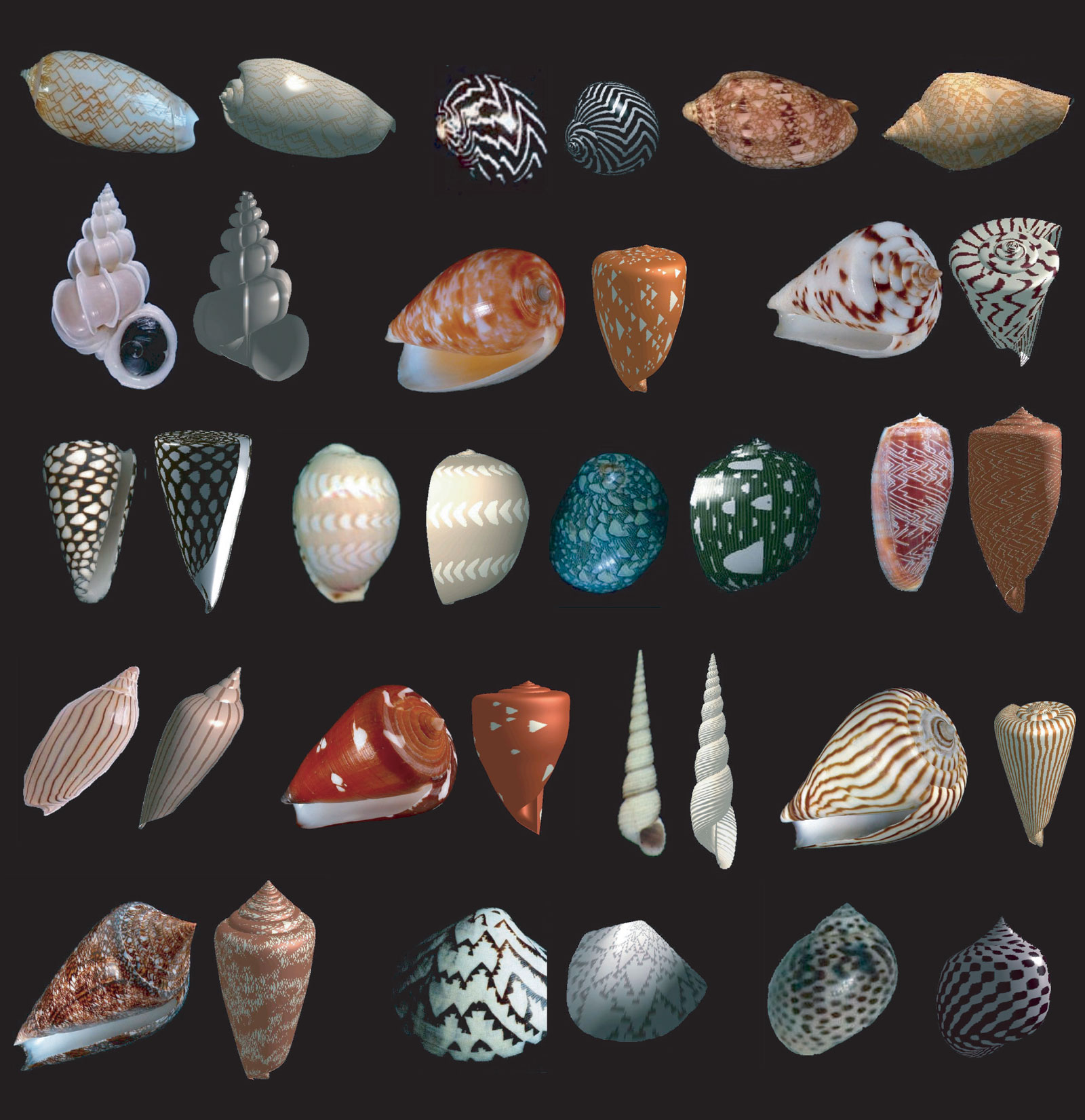
ESPM professor George Oster and colleagues presented a model to explain how the diversity of shell shapes and patterns amongst the marine mollusks arise from the neural net in their mantle—the secretory organ that constructs and paints the shell.
A mathematical model of the neural net can reproduce the shell shapes and patterns. The figure shows pairs of real shells and simulated shells created by the model.
Boettiger, A., B. Ermentrout, G. Oster (2009). The neural origins of shell structure and pattern in aquatic mollusks. PNAS 106:6837-6842.
Paper Abstract: We present a model to explain how the neurosecretory system of aquatic mollusks generates their diversity of shell structures and pigmentation patterns. The anatomical and physiological basis of this model sets it apart from other models used to explain shape and pattern. The model reproduces most known shell shapes and patterns and accurately predicts how the pattern alters in response to environmental disruption and subsequent repair. Finally, we connect the model to a larger class of neural models.
